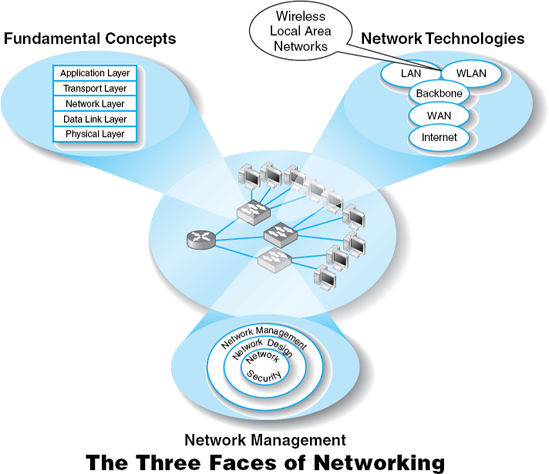Chapter 7. WIRELESS LOCAL AREA NETWORKS

ALTHOUGH TRADITIONAL wired Ethernet LANs dominate today's network environment, wireless LANs (WLANs) are common. This chapter describes the basic components of a WLAN and then examines three common wireless technologies: Wi-Fi (IEEE 802.11), WiMAX (IEEE 802.16), and Bluetooth (IEEE 802.15). The chapter ends with a discussion of best practice WLAN design, including security, and how to improve performance.
OBJECTIVES ▾
Understand the major components of WLANs
Understand Wi-Fi
Be familiar with Wi-Max
Be familiar with Bluetooth WLANs
Be familiar with how to improve WLAN performance
Be familiar with WLAN security
Understand the best practice recommendations for WLAN design
CHAPTER OUTLINE
INTRODUCTION
WLAN COMPONENTS
Network Interface Cards
Access Points
Radio Frequencies
WI-FI
Topology
Media Access Control
Types of Wi-Fi
Wi-Fi as Public Internet Access
WIMAX
Topology
Media Access Control
Types of WiMAX
BLUETOOTH
Topology
Media Access Control
THE BEST PRACTICE WLAN DESIGN
Recommendations
Physical WLAN Design
WLAN Security
IMPROVING WLAN PERFORMANCE
Improving Device Performance
Improving Circuit Capacity
Reducing Network Demand
IMPLICATIONS FOR MANAGEMENT
SUMMARY
INTRODUCTION
The use of Wireless LANs (WLANs) is growing rapidly. A recent survey of network managers indicated that more than 90 percent of companies are using wireless LANs, usually in addition to traditional wired LANs. Wireless ...
Get Business Data Communications and Networking now with the O’Reilly learning platform.
O’Reilly members experience books, live events, courses curated by job role, and more from O’Reilly and nearly 200 top publishers.

